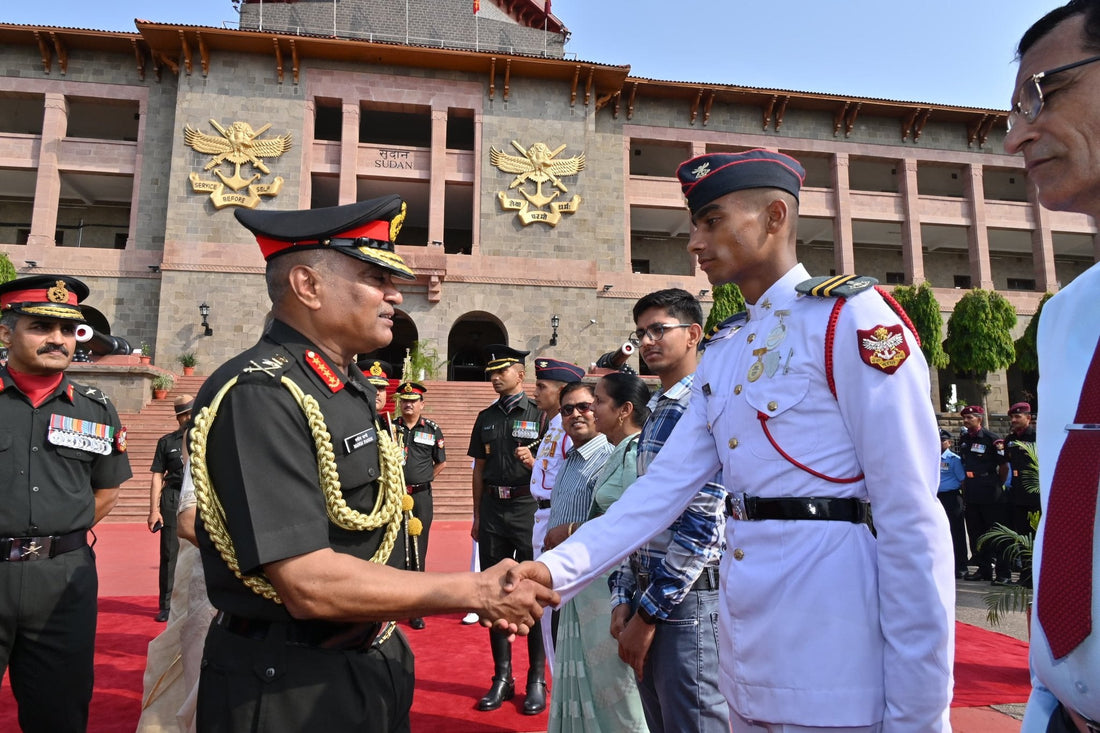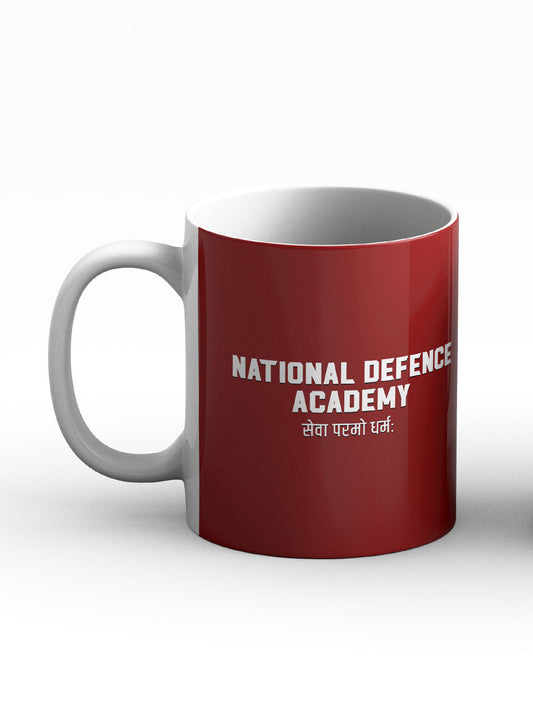Master General Ability Test (GAT) for NDA Exam: Key Topics & Resources

In the ever-evolving landscape of competitive exams in India, the General Ability Test (GAT) has emerged as a crucial component for aspirants aiming to secure a seat in the National Defence Academy (NDA). The NDA's role in shaping India's future leaders in the armed forces cannot be overstated, and GAT serves as a linchpin that tests a candidate’s mental acuity, analytical skills, and problem-solving abilities. As such, understanding the intricacies of the GAT is imperative for any NDA aspirant.
The significance of the GAT lies in its comprehensive evaluation of a candidate’s general intelligence, verbal and non-verbal reasoning, mathematical aptitude, and comprehension skills. Unlike some traditional assessments, which may tend to focus narrowly on specific subjects, the GAT encapsulates a broad spectrum of skills. This holistic testing approach is designed to identify those who possess the potential to excel in the challenges of a rigorous military life and beyond.
Historical Context
The GAT framework dates back several decades within the Indian armed forces and has undergone several iterations to stay relevant with contemporary educational and psychological metrics. Initially, assessments concentrated on academic performance in subjects like Mathematics and Science. Over time, as the complexity of the roles evolved, the GAT was shaped to encompass various other cognitive skills, reflecting the growing need for critical thinkers and effective communicators in the armed forces.
From its early days, the exam has adapted to the changing paradigms of education and the requirements of modern warfare, emphasizing the need for not just physical fitness but also mental acuity and leadership qualities. This evolution underscores the importance Indian Defence attaches to preparing a cadre that is not just knowledgeable but also innovatively smart and strategically minded.
Key Aspects of the GAT
1. Structure of the GAT
The General Ability Test typically comprises two major sections:
-
Mathematics: This section assesses a candidate's mathematical reasoning, problem-solving abilities, and comprehension of basic numerical concepts. Topics often covered include:
- Arithmetic
- Algebra
- Geometry
- Trigonometry
- Statistics
-
General Knowledge and English: This section features questions aimed at evaluating the candidate's grasp of language, comprehension abilities, and general awareness of current affairs. Key topics include:
- Vocabulary
- Sentence structure
- Reading comprehension
- Current events in national and international contexts
2. Core Topics to Focus On
Understanding the key topics is instrumental in excelling in the GAT. Here’s a detailed look at each area:
Mathematics
- Arithmetic: Fundamental operations, percentages, ratios, and profit and loss problems. Familiarity with shortcuts and quick calculation methods can save time during the exam.
- Algebra: Prepare for equations, inequalities, and polynomials. Algebraic identities and simplifications are essential for tackling higher-level problems.
- Geometry and Trigonometry: Focus on properties of various shapes, theorems, and basic trigonometric ratios. Visualization through graphs can significantly enhance understanding.
- Statistics: Basic concepts such as mean, median, mode, and standard deviation are critical. Grasp how to interpret data from charts and tables.
General Knowledge and English
- Vocabulary and Grammar: A strong foundation in vocabulary is crucial. Regular reading of newspapers and engaging with diverse text sources can bolster this.
- Current Affairs: Stay updated with national and international news. Following reputable news sources and magazines can provide a rich reservoir of knowledge.
- Reading Comprehension: Develop skills to quickly grasp the main idea, themes, and arguments in passages. Practicing with varied reading materials can enhance these skills.
The integration of these subjects in the GAT means candidates need a well-rounded preparation approach, ensuring that each segment receives adequate focus.
Resources for Mastering the GAT
To master the GAT, aspirants can utilize a plethora of resources. Among the most notable are the study materials provided by SSBCrack and SSBCrackExams, which offer a comprehensive range of books, online courses, and eBooks tailored specifically for the NDA examination.
- Books: The books published by SSBCrack are rich in content, providing exhaustive coverage of all topics with strategic insights and useful illustrations.
- Online Courses: These are particularly useful for interactive learning, allowing candidates to engage with subject matter experts and practice efficiently through mock tests tailored to the GAT format.
- eBooks: The availability of eBooks makes it easy for candidates to study on the go, with access to timely updates on current affairs and other dynamic subjects assessed in the GAT.
- Practice Tests: Engaging with sample papers and previous years' question papers is vital. This not only familiarizes candidates with the GAT format but also aids in time management and self-assessment.
Case Studies or Real-world Applications
Real-world applications of the skills tested in the GAT are evident even beyond the exam itself. For instance, many successful NDA alumni attribute their success in navigating complex military strategies and decisions to the analytical and problem-solving abilities honed during their preparation for the GAT.
Consider the case of an NDA alumnus who thrived in a high-stakes operational scenario. During a collaborative exercise involving strategic troop movements, he utilized his skills in critical thinking and mathematical estimation, skills sharpened through rigorous GAT preparation, to optimize resource allocation and troop deployment effectively. The GAT did not merely prepare him for an exam; it equipped him for decisive real-time challenges.
Statistical Data and Research Insights
Research consistently shows that cognitive ability tests, like the GAT, are strong predictors of future academic and occupational success. According to a study published in the Journal of Applied Psychology, cognitive ability accounts for approximately 20% to 25% of variance in job performance across a wide range of occupations.
Moreover, aspirants who dedicate time to developing their general awareness and mathematical reasoning show significant improvement in problem-solving capabilities. A survey by the National Council of Educational Research and Training (NCERT) found that students who engaged in multifaceted study approaches, such as those offered by platforms like SSBCrack, performed better in analytical reasoning tasks.
Comparative Analysis
When analyzing various preparatory methods for the GAT, it is pertinent to contrast traditional rote learning with modern interactive approaches. Traditional methods often emphasize memorization, focusing narrowly on subjects without integrating skill applications. In contrast, interactive learning methods, such as those provided by SSBCrack, prioritize skill development and adaptive learning strategies, making preparation more holistic.
For example, a traditional textbook may provide information about the trigonometric formulas but lacks the contextual application in various mathematical problems. In contrast, an interactive online course can present real-time quizzes and problem-solving scenarios that push a candidate to apply those formulas in practical situations.
Challenges and Solutions
Key Challenges
- Time Management: One of the significant hurdles faced by GAT aspirants is managing the limited time during the exam.
- Diverse Topic Coverage: The broad range of subjects tested can overwhelm candidates, making it challenging to focus effectively.
- Performance Anxiety: The pressure of the exam can lead to anxiety, impacting overall performance.
Potential Solutions
- Mock Tests: Regular practice through timed mock tests can immensely aid in managing time during the actual examination. SSBCrack provides insights into pacing strategies to improve efficiency.
- Focused Study Plans: Creating a structured and focused study plan can ensure that aspirants cover all necessary topics without feeling overwhelmed.
- Mindfulness and Relaxation Techniques: Incorporating techniques such as meditation can help manage anxiety, allowing candidates to perform at their best.
Future Trends and Predictions
As the NDA and the associated exams evolve, the methods of preparing for the GAT are likely to become more technology-enabled. Emerging trends suggest that gamification and artificial intelligence will play a significant role in personalized learning experiences. Programs that adapt to individual learning preferences can revolutionize the way aspirants prepare, ensuring that each area receives appropriate focus and attention.
Additionally, as the nature of warfare continues to adapt to modern technology and global dynamics, the GAT may also evolve. The rise of cyber warfare and technological competencies might see newer dimensions integrated into the examination framework, aligning with the future needs of the Defence forces.
Conclusion
The General Ability Test is not merely a gatekeeper for the NDA; it is a reflection of the qualities needed for modern Defence challenges. Understanding its structure, preparing with the right resources from platforms like SSBCrack, and employing effective strategies can significantly enhance prospects for success. As aspirants approach this pivotal assessment, they must recognize that the skills honed in preparation will not only aid them in the examination but will also serve them throughout their careers in the Defence forces and beyond.
To all aspirants, consider this not just preparation for an examination, but a stepping stone towards a dynamic career in the Indian Defence forces. Engage with the resources available, adopt a strategic approach to your studies, and let your resolve pave the way to success. The future beckons, and it is in your hands to seize it.



















